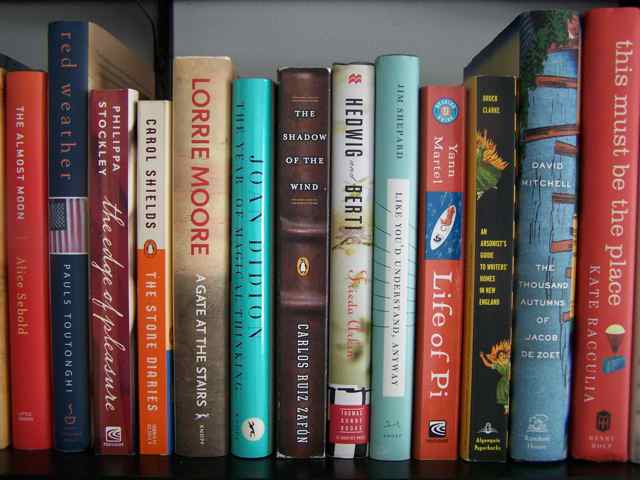 If it’s true that your twenties are the “Defining Decade” – the crucial, formative years that determine how the rest of your life will go – then the troubled young adults in Emily St. John Mandel’s third novel, The Lola Quartet, are definitely screwed. Their lives have all gone off the rails, somewhere along the line. Depression and decay lurk everywhere in the oppressive heat of Sebastian, Florida, the town where they grew up and to which they eventually return.
If it’s true that your twenties are the “Defining Decade” – the crucial, formative years that determine how the rest of your life will go – then the troubled young adults in Emily St. John Mandel’s third novel, The Lola Quartet, are definitely screwed. Their lives have all gone off the rails, somewhere along the line. Depression and decay lurk everywhere in the oppressive heat of Sebastian, Florida, the town where they grew up and to which they eventually return.
The third novel by Canadian-American author Emily St. John Mandel, The Lola Quartet is composed of vignettes, whose order at first appears random and tangential, before their connections and intersections gradually become apparent. Ten years after high school graduation, when they dissolved the Lola Quartet and went their separate ways, the four former members of the prize-winning high school jazz ensemble – Gavin, Daniel, Sasha, and Jack – are brought back into tangential contact with each other through their connection to Sasha’s younger half-sister – the tough, vulnerable, and elusive Anna.
The novel’s structure and style seems inspired by the style of quick-shifting gypsy jazz music, as performed by the real-life master guitarist Django Reinhart, who is idolized by Liam Deval, one of the many musicians in the novel. Here’s the description, from early in the book, of Liam Deval’s jazz guitar duo that Gavin is listening to after his life has imploded. Gavin has a sense that these performances he is witnessing are momentous, but doesn’t know that Liam Deval plays another role in his story, as well:
Arthur Morelli was older, an unsmiling man in his late thirties or early forties who played with a heavy swing. In his solos he wheeled out into wild tangents, he pushed the music to the edge before he came back to the rhythm. Liam Deval looked about Gavin’s age, late twenties or early thirties, the star of the show: a perfect counterpoint to Morelli, all shimmering arpeggios and light sharp tones. Gavin had never seen anyone’s hands move so quickly. His skill was astonishing. Jazz slipped into gypsy music and back again, a thrilling hybrid form. Gavin knew it wasn’t new, what they were doing, but it was the first time he’d encountered it live.
The Lola Quartet’s structure of intersecting stories building atmospheric tension reminded me of Dan Chaon’s Await Your Reply. If you liked Await Your Reply, you should definitely add The Lola Quartet to your to-read list. (Just keep in mind the description of Await Your Reply in The New York Times Sunday Book Review: “ambitious, gripping and unrelentingly bleak.”)
a
